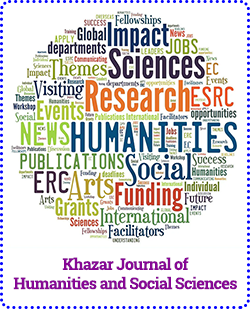Linguistic Devices Used in Newspaper Headlines
DOI:
https://doi.org/10.5782/2223-2621.2022.25.2.5Keywords:
linguistic devices, headline, news, discourse strategies, functions of headlines, newspapersAbstract
Nowadays mass media plays a crucial role in people’s lives. Online newspapers constitute a part of media discourse, which makes for extremely important bodies of text for the purposes of research in discourse analysis. In news headlines, careful and sensitive use is made of linguistic devices in order to make the headlines unique and different, influence the readers, create trust for the newspaper, and, most importantly, invite and encourage the reader to proceed to the whole story and the main body of the report/news report. In this spirit, this study is a linguistic analysis of headlines in the political section of established online American newspapers. The data for this study comprises 50 headlines collected from 5 online newspapers revolving around the theme of Donald Trump. It aims to explore the linguistics structure of newspaper headlines in the sample articles from these 5 most widely read newspapers: The Wall Street Journal, The New York Times, USA Today, Los Angeles Times, and Washington Post. In this qualitative-quantitative study, use is made of the model by Montgomery (2007) that takes account of a comprehensive picture that pays due respects to linguistic, semantic and discursive properties of headlines alongside each other in a complete package. The findings are mapped out in the form of figures and charts. The results of the frequency analysis showed that newspapers mostly used ‘full sentence’ and ‘ellipsis’ in their headlines. The qualitative analysis revealed that most of the semantic, linguistic and discursive strategies used in headlines are geared to the ‘tactical incompleteness strategy’, a helpful notion and a part of Montgomery’s model.
Downloads
References
- Al-Hindawi, F. & Hmood Ali, A. (2018). A Pragmatic Study of CNN and BBC News Headlines Covering the Syrian Conflict. Advances in Language and Literary Studies, 9(3), 43-51.
- Alipour, M. & Monjezi N. (2016). English and Persian Sport Newspaper Headlines: A comparative study of linguistic means. International Journal of Foreign Language Teaching, 4(13).
- Bell, A. (1984), "Language style as audience design". Language in Society. 13(2), 145–204.
- Bonyadi, A., & Samuel, M. (2013). Headlines in Newspaper Editorials: A Contrastive Study. SAGE Open, 3(2). https://doi.org/10.1177/2158244013494863
- Chovanec, J. (2014). Pragmatics of Tense and Time in News: From canonical headlines to online news texts. Amsterdam/Philadelphia: John Benjamins Publishing Company.
- Conboy, M. (2013). The Language of the News. London: Routledge
- Develotte, C. & Rechniewski, E. (2001). Discourse analysis of newspaper headlines: a methodological framework for research into national representations. The Web Journal of French Media Studies. 4(1).
- Dor, D. (2003). On newspaper headlines as relevance optimizers. Journal of Pragmatics 35(5), 695-721.
- Edward S. H. & Chomsky, N. (1988), Propaganda Mill: The Media Churn Out the Official Line, The Progressive, June 1988.
- Fowler, R. (1991) Language in the News: Discourse and Ideology in the press. London: Rutledge.
- Gattani, A. (2005). Maximum Entropy Discriminative Models for Headline Generation.
- Haneefa, M., & Nellikka, S. (2010). Content Analysis of Online English Newspapers in India. DESIDOC Journal of Library & Information Technology, 30(4), 17-24. https://doi.org/10.14429/djlit.30.4.292.
- Iarovici, E. & Rodica, A. (1989). The strategy of the headline. Semiotica, 77(4), 441–459.
- Ifantidou, E. (2009). Newspaper headlines and relevance: Ad hoc concepts in ad hoc contexts. Journal of Pragmatics, 41(4).
- Javed, S., & Mahmood, R. (2011). A critical discourse analysis of the news headlines of budget of Pakistan. Interdisciplinary Journal of Contemporary Research in Business, 3(5), 120-129.
- Lodhi, M.A., Mukhtar, S., Akhtar, S., Nafees, K., Akhtar, N., & Sajid, H.M. (2019). Textual and Rhetoric Analysis of News Headlines of Urdu and English Newspapers. International Journal of English Linguistics, 9(324).
- Magtira, J. M., & Bernardo, A. S. (2017). A contrastive analysis of Filipino and American newspaper editorial headlines. Asian Journal of English Language Studies (AJELS) Volume 5, December 2017.
- McCarthy, M. & Carter, R. (1994). Language as Discourse. Perspectives for Language
Teaching. London and New York: Longman - Montejo, G. M. & Adriano, T. Q. (2018). A Critical Discourse Analysis of Headlines in
Online News Portals. Journal of Advances in Humanities and Social Sciences. 4(2), 70-83. - Montgomery, M. (2007). The Discourse of Broadcast News: A linguistic approach. London. Routledge.
- Reah, D. (2002). Language of Newspapers. London: Routledge.
- Richardson, J. E. (2007). Analysing Newspapers. An Approach from Critical Discourse Analysis. London: Palgrave.
- Shevtsova, A. (2019). Stylistic Features of British Newspaper Headlines in the Diachronic Aspect. Studies in Linguistics, Culture and FLT, Volume 5, 66-76.
- Taiwo, R. (2007). Language, ideology and power relations in Nigerian newspaper headlines. Nebula, 4(1), 218-245.
- Van Dijk, T. A. (1988). News analysis. Case studies of international and national news in the press. Hillsdale, NJ: Erbaum.
- Van Dijk, T. A. (1998a). Critical Discourse Analysis. New York: Palgrave Macmillan.







